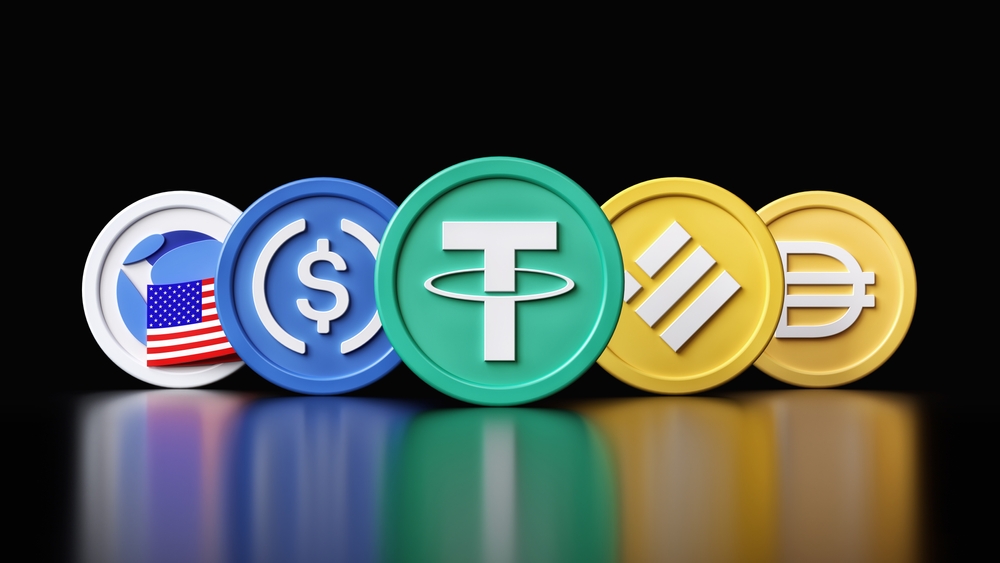The Rise of Stablecoins: Use Cases, Applications, and Why They Matter
Unlock the potential of stablecoins in crypto. Learn their role in DeFi, asset tokenization, and more. Discover why they matter and how they're changing investments.


In the ever-evolving realm of cryptocurrency, few developments have been as transformative as the rise of stablecoins.
As the market matures, these digital assets are increasingly gaining prominence due to their unique ability to maintain a stable value, often pegged to a fiat currency like the US dollar or to commodities.
This development comes on the heels of the recent approval of Bitcoin ETFs by the SEC, marking a significant milestone in the acceptance of cryptocurrencies by mainstream investors.
New to crypto? Start here with our crypto 101 guide.
Understanding Stablecoins
Stablecoins are a subset of cryptocurrencies designed to mitigate the volatility that has traditionally been associated with digital assets like Bitcoin and Ethereum.
They achieve this by pegging their value to a stable asset, such as a fiat currency or a commodity.
This stability is achieved through various mechanisms, including collateralization, algorithmic control, and centralized or decentralized governance.
Learn more: What are stablecoins and how do they work?
Use Cases and Applications of Stablecoins
Decentralised Finance (DeFi): Stablecoins have become an essential part of the decentralized finance ecosystem.
They serve as a stable medium of exchange within DeFi protocols, allowing users to conduct transactions without the risk of price volatility.

Stablecoins are used as collateral in lending and borrowing protocols, providing liquidity and enabling users to access loans without the need for traditional financial intermediaries.
Asset Tokenization
Stablecoins are also used for asset tokenization, where real-world assets such as real estate, commodities, or art are represented as digital tokens on a blockchain.
Stablecoins provide a stable and liquid medium for trading these tokens, allowing investors to gain exposure to a wide range of assets without the need for traditional financial intermediaries.
Central Bank Digital Currencies (CBDCs)
Central banks around the world are exploring the possibility of issuing their own digital currencies, known as central bank digital currencies (CBDCs).
Stablecoins could play a crucial role in the development and adoption of CBDCs, serving as a stable and interoperable medium of exchange between different CBDCs and other digital assets.
Cross-Border Payments
Stablecoins are increasingly being used for cross-border payments, offering a faster, cheaper, and more efficient alternative to traditional remittance methods.
Stablecoins enable businesses and individuals to send and receive payments across borders without the need for traditional financial intermediaries, reducing costs and improving accessibility.
Financial Inclusion
Stablecoins have the potential to improve financial inclusion by providing access to financial services for underserved populations.
Stablecoins enable individuals and businesses in regions with limited access to traditional banking infrastructure to access digital financial services, such as payments, savings, and lending, using only a smartphone and an internet connection.
Micropayments and Microlending
Stablecoins enable micropayments and microlending by reducing transaction costs and enabling smaller transactions.
This opens up new opportunities for businesses and individuals to engage in microtransactions, such as paying for digital content or services, and access microloans for small-scale projects or investments.
Supply Chain Finance
Stablecoins can be used to streamline supply chain finance by providing a transparent and efficient way to track and settle transactions between suppliers, manufacturers, and distributors.
Stablecoins enable businesses to optimize working capital, reduce transaction costs, and improve liquidity in supply chains, ultimately enhancing the efficiency and resilience of global trade.
In conclusion, stablecoins have the potential to revolutionize various aspects of the global economy, from finance and payments to trade and investment.
As the adoption of stablecoins continues to grow, their impact on the financial system and society at large is likely to become even more significant, paving the way for a more inclusive, efficient, and transparent financial ecosystem.
Why Stablecoins Matter
The primary concern that has hindered the widespread adoption of cryptocurrencies is their inherent volatility.
This volatility can make it difficult for investors to accurately assess risk and can lead to significant price fluctuations, making cryptocurrencies less attractive as a medium of exchange or a store of value.

Stablecoins address this concern by providing a more stable investment option. This makes them particularly attractive to risk-averse investors, including institutional investors and businesses, who may have been hesitant to engage with cryptocurrencies due to their volatile nature.
How Stablecoins are Changing the Investment Landscape
The rise of stablecoins is not only changing the way individual investors approach cryptocurrency investment but is also reshaping the broader investment landscape.
Stablecoins are increasingly being adopted by businesses for transactions and remittances, providing a new level of efficiency and stability in operations.
For example, businesses can use stablecoins to facilitate cross-border transactions without having to worry about exchange rate fluctuations.
Similarly, stablecoins can be used for payroll and supply chain management, streamlining processes and reducing costs.
The Future of Stablecoins
As the cryptocurrency market continues to evolve, stablecoins are expected to play an increasingly important role.
They offer a bridge between the traditional financial world and the innovative possibilities of cryptocurrency, potentially transforming how we think about money and transactions.
In the future, stablecoins could be used for a wide range of applications, including decentralized finance (DeFi), asset tokenization, and even central bank digital currencies (CBDCs).
This versatility makes them an exciting addition to the crypto landscape, providing opportunities for a wider range of investors and businesses to engage with digital currency.
Takeaways
The rise of stablecoins represents a new era in cryptocurrency investment. With their stability and versatility, they are an exciting addition to the crypto landscape, providing opportunities for a wider range of investors and businesses to engage with digital currency.
Further reading: Explore more topics on all things crypto.
Share to
Stay curious and informed
Your info will be handled according to our Privacy Policy.
Make sure to follow our Twitter, Instagram, and YouTube channel to stay up-to-date with Easy Crypto!
Also, don’t forget to subscribe to our monthly newsletter to have the latest crypto insights, news, and updates delivered to our inbox.
Disclaimer: Information is current as at the date of publication. This is general information only and is not intended to be advice. Crypto is volatile, carries risk and the value can go up and down. Past performance is not an indicator of future returns. Please do your own research.
Last updated April 9, 2024





